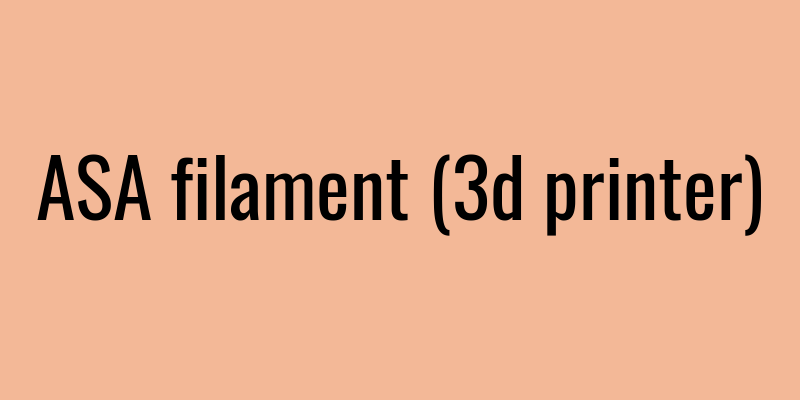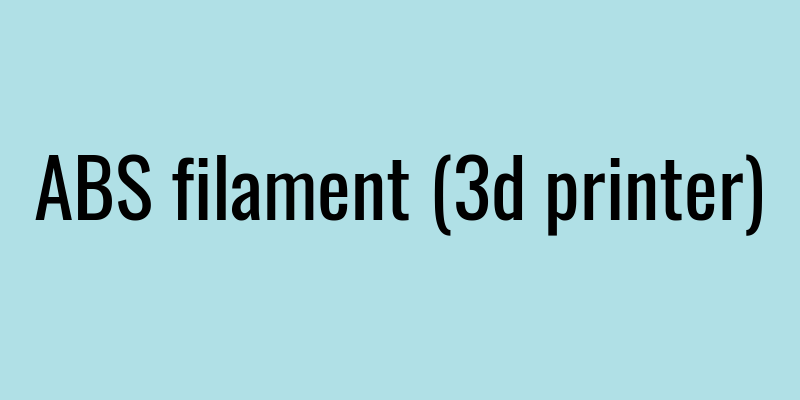Exploring the Pros and Cons of PETG Filament for 3D Printing
Is PETG the right choice for your next 3D printing project?
In the burgeoning world of 3D printing, materials selection is a crucial factor that determines the outcome of the final product. One such popular material is PETG filament, which has gained traction due to its unique properties. PETG, or polyethylene terephthalate glycol, is known for its ease of use and versatility in a wide range of applications. In this article, we will delve into the advantages and disadvantages of using PETG filament for 3D printing. Understanding these factors will empower you to make an informed decision for your next project.
From hobbyists to professional manufacturers, various users are adopting PETG filament to create robust, striking, and functional parts. Its balanced characteristics make it a common choice for both beginners and experts alike. However, while the allure of PETG is undeniable, it's essential to consider its limitations alongside the benefits. In this article, we will provide an unbiased view of PETG filament, helping you navigate its advantages and disadvantages to achieve successful 3D printing outcomes.
Pros
Every 3D printing enthusiast knows that the material used plays a pivotal role in the finished product. PETG filament boasts a range of benefits that can elevate your 3D printing experience. This thermoplastic is a modified version of PET, and it combines the best features of both stiffness and flexibility, making it a favorite among many makers. In this section, we will explore the myriad advantages that make PETG filament a standout choice, ensuring your projects are not only successful but also rewarding.
Exceptional Strength and Durability
One of the standout features of PETG filament is its exceptional tensile strength and durability. This material is known to produce parts that are not only strong but also resistant to impacts and wear, making it ideal for functional prototypes and end-use products. The robust nature of PETG can be a game-changer for those who require parts that endure rigorous usage without compromising integrity. Additionally, its resistance to moisture and chemicals adds to its appeal, particularly in outdoor or industrial applications.
Easy Printing and Adhesion
PETG filament is often praised for its straightforward printing process, making it accessible for both beginners and seasoned professionals. The material's excellent adhesion properties mean that prints tend to stick to the build plate effectively, reducing the likelihood of warping or detachment during printing. This ease of use can significantly enhance the printing experience, especially when working on intricate projects that require precision. Furthermore, PETG has a lower tendency to emit unpleasant fumes during printing compared to some other thermoplastics.
Versatile Applications
Another advantage of PETG filament is its versatility in practical applications. It can be used in a wide range of industries, from prototyping to consumer products. Its ability to withstand heat and its flexibility allow it to be an excellent choice for producing items like phone cases, customized tools, and even components in mechanical assemblies. The expansive creative potential of PETG makes it a favorite among designers and engineers looking to push the limits of their 3D printing capabilities.
Low Moisture Absorption
One of the significant advantages of PETG filament is its low moisture absorption. Unlike some other materials, such as PLA or nylon, PETG is less likely to absorb moisture from the environment. This characteristic helps maintain the filament’s quality over time, leading to more consistent print results. Moreover, low moisture absorption means that it can be stored for longer periods without degrading, making it an excellent option for both hobbyists and professionals seeking reliability in their projects.
Chemical Resistance
PETG filament stands out for its excellent chemical resistance, making it a suitable choice for printing objects that may come into contact with various substances. This includes oils, greases, and even some acids. Due to this property, products made from PETG can be used in environments where they might encounter fluid spills or exposure to harsh chemicals. This resistance expands the potential applications and longevity of items produced using this filament, particularly in industrial and laboratory settings.
Good Flexibility
Another important advantage of PETG filament is its excellent flexibility. While it maintains a robust structure, it also has enough give to absorb impacts, making it less prone to shattering compared to more brittle materials. This flexibility is particularly beneficial for creating functional parts that need to withstand mechanical stress without failing. As a result, designers can use PETG for products that require both strength and some degree of movement or bending, providing versatility in engineering and creative projects.
Missing a pro?
Let us know which pro you are missing!
Cons
While PETG filament offers numerous benefits, it is imperative to consider its disadvantages as well. A discerning user knows that understanding both sides of the material's capabilities is essential for making the right choice. In this segment, we will shed light on the potential drawbacks of PETG filament that might lead to challenges during your 3D printing projects. Knowing these limitations in advance will help you prepare adequately and decide if PETG is the right fit for your needs.
Potential for Warping
While PETG generally exhibits good adhesion, it can still suffer from warping in some cases, particularly with larger prints or less-than-ideal printing conditions. Warping occurs when the material cools unevenly, leading to distortion or separation from the print bed. Although the impact may be less pronounced compared to ABS, it is something users need to keep in mind. Proper bed leveling, ambient temperature control, and using adhesive aids can mitigate this issue, but it requires attention during the printing process.
Stringing Issues and Cleanup
One of the significant challenges with PETG filament is that it can produce stringing or oozing during printing. This occurs when the filament continues to extrude while the print head moves between different parts of the model. Consequently, users may need to invest extra time in cleaning up these stringy remnants after printing, which can be frustrating and time-consuming. While tuning settings can reduce stringing, it often requires a degree of experimentation to get it just right.
Limited Temperature Resistance
Another disadvantage of PETG filament is its limited resistance to higher temperatures. While it can handle moderate heat, it tends to soften at temperatures beyond approximately 75-80 degrees Celsius. This characteristic restricts its use in applications where it might be exposed to heat, such as in automotive components or outdoor settings in high-temperature conditions. Understanding this limitation is crucial for users intending to create items that face thermal stress.
Surface Finish Limitations
Despite its many advantages, PETG filament can result in a less-than-ideal surface finish compared to other materials. It often exhibits a glossy appearance that some users may not prefer for their projects. Additionally, fine details can sometimes get lost in prints, especially at higher speeds or with thinner layers. This limitation may necessitate post-processing work, such as sanding or painting, to achieve the desired aesthetic, which can add time and effort to the overall project workflow.
Longer Print Times
When working with PETG filament, users may notice longer print times compared to other materials such as PLA. Due to its higher viscosity, PETG typically requires slower printing speeds to ensure quality results and minimize issues like stringing or blobs. This can be a drawback for users looking to streamline their workflow or produce multiple prints efficiently. Although the added time may result in superior durability and finish, it could affect productivity in applications where speed is a priority.
Cost Considerations Compared to PLA
When considering the cost of filament, PETG can be more expensive than traditional PLA. Although PETG offers added strength and durability, hobbyists and casual users may feel hesitant to invest in a pricier option for everyday printing projects. While the benefits may outweigh the costs for specific applications, for those whose needs are more basic, the increased expense may present a barrier to entry. Budget-conscious users must weigh these costs against the advantages offered by PETG.
Missing a con?
Let us know which con you are missing!
Conclusion
In summary, PETG filament boasts a powerful combination of strength, durability, and versatility that makes it an attractive option for many 3D printing enthusiasts. However, underlying challenges such as stringing issues, temperature limitations, and cost must be acknowledged to ensure responsible use. Ultimately, whether you choose PETG filament or not should align with your specific project requirements and personal printing preferences. With the right understanding and preparation, PETG can unlock new possibilities in your 3D printing journey.
What do you think?
Do you think the pros outweigh the cons?





